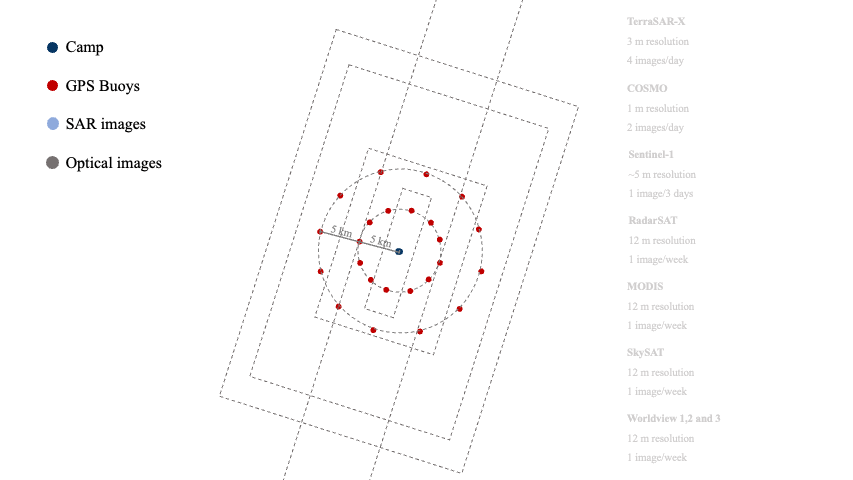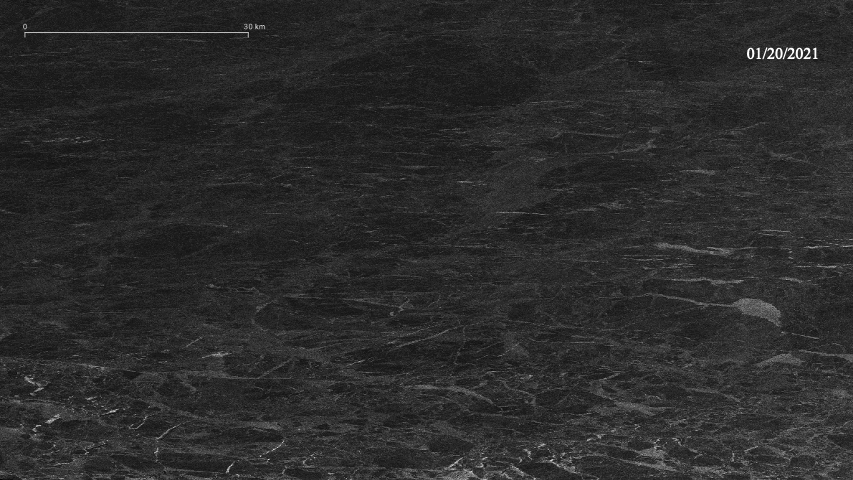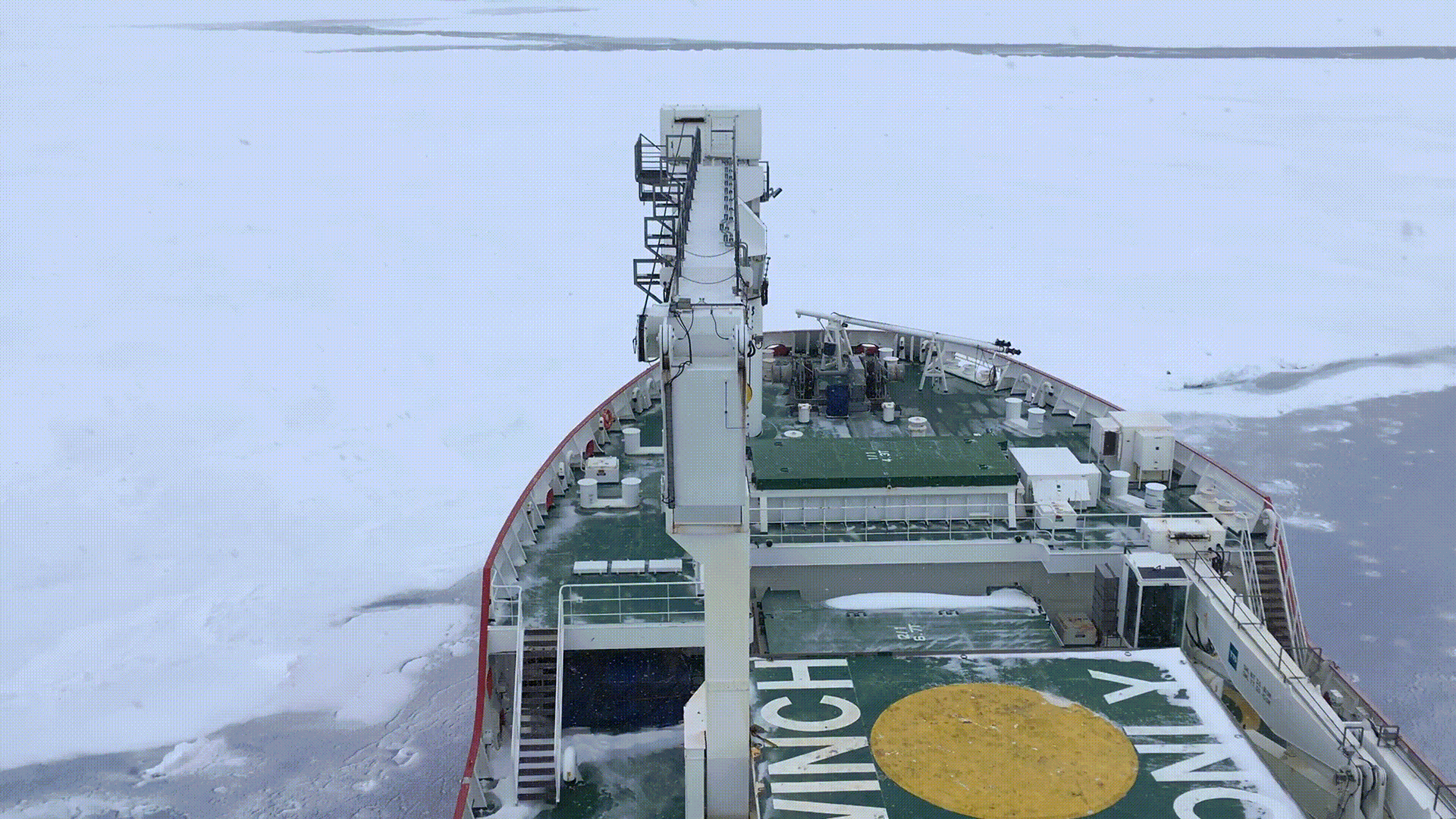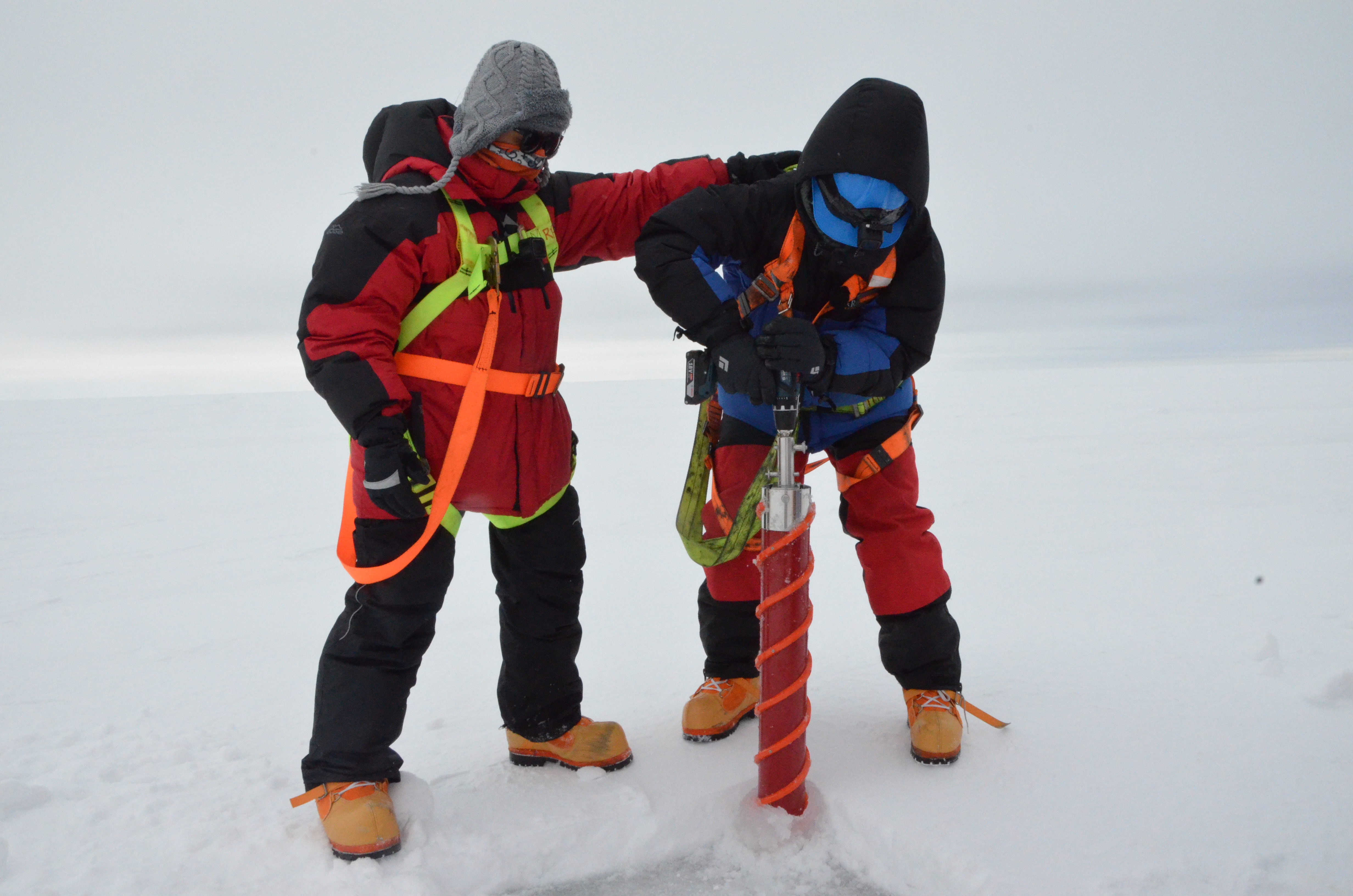
Kelsey Kaplan
Projects
SIDEx
In March 2021 a distributed array of sensors and platforms will be deployed in an ice floe in the Beaufort Sea off the Alaskan coast to monitor sea ice stress, strain and drift over several months.
I will be part of the ground support team, providing sea ice fracture and lead formation analysis from satellite data to the field team during the field campaign. My primary role is developing sea ice motion analysis products using integrated satellite and buoy GPS data that will be used for advancing our knowledge of the fine-scale strain and stress dynamics of sea ice under the influence of atmospheric, wave and ocean forces.
 Field camp layout and remote sensors
Field camp layout and remote sensors
A combination of Sentinel-1 and MODIS satellite imagery will be used to track lead and crack formation around the camp. The ground support team will provide the field team with daily reports of the sea ice drift and fracture based on manual analysis.
 Sentinel-1 imagery from two days in January 2021 showing the changing sea ice field.
Sentinel-1 imagery from two days in January 2021 showing the changing sea ice field.
 Processing pipeline being developed for motion analysis algorithm.
Processing pipeline being developed for motion analysis algorithm.
You can see the full project presentation here.
MOSAiC
In collaboration with the Sea Ice Dynamics and SAR Drift and Deformation Teams, we are developing algorithms for drift and deformation analysis along with methods for fracture and lead formation prediction using Sentinel-1 data.
The MOSAiC expedition is the largest polar expedition ever to have taken place and is the first year-round expedition into the central Arctic Ocean. Spearheaded by the Alfred Wegener Institute, Helmholtz Centre for Polar and Marine Research, the project involved hundreds of researchers from 20 countries with the primary objective of better understanding global climate change through observations of changes in the Arctic. MOSAiC in-situ observations centered around climate processes that couple atmosphere, sea ice, biogeochemistry, ocean and ecosystem [1].
With the expedition coming to a close in October 2020 and the return of the icebreaker, the RV Polarstern, to Bremerhaven, Germany, the extensive data collected will now be made use of in numerous research projects and papers.
See more about the MOSAiC Expedition here.
SCALE
A six week expedition in the Spring of 2019 to the MIZ in the Antarctic aboard the S.A. Agulhas II.
 The S.A. Agulhas II icebreaker in the Southern Ocean during the Scale Expedition.
The S.A. Agulhas II icebreaker in the Southern Ocean during the Scale Expedition.
The goal of the project was to record seasonal cycle dynamics in the Southern Ocean in order to improve understanding of climate sensitivity. On board were 97 participants across 17 nationalities from 19 different scientific institutions. Read more here.
I participated as a member of the Sea Ice Team from the University of Cape Town. My responsibilities included ice coring, sea ice observations, buoy troubleshooting and deployment and the operation and maintenance of the Stereo Vision system I developed for my final honors project.
